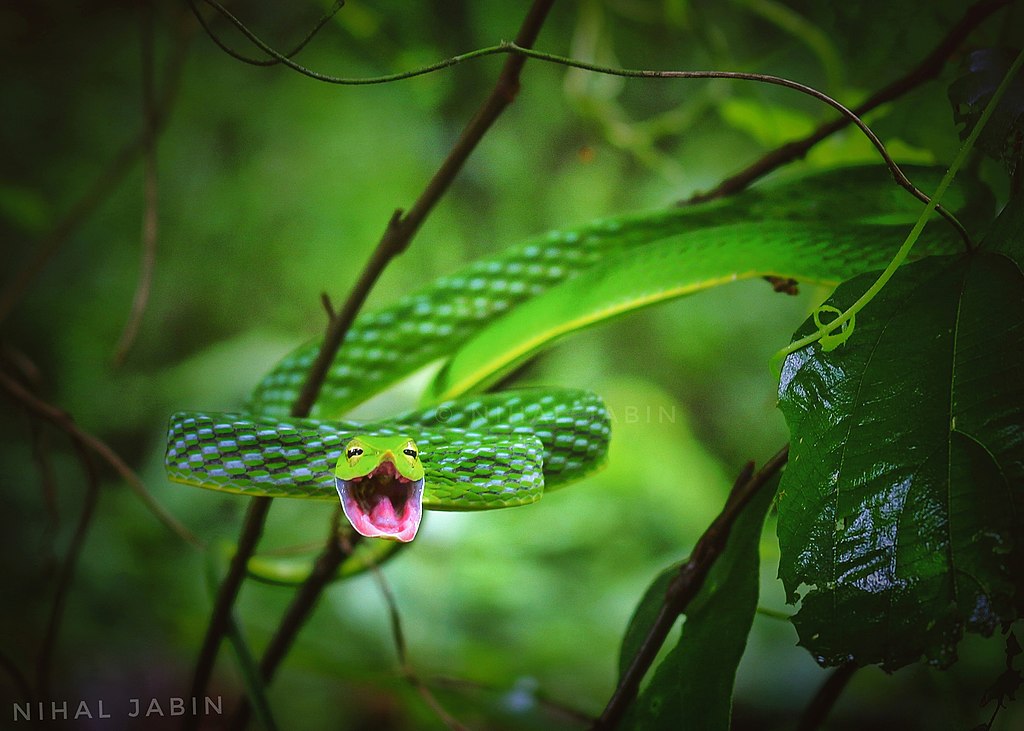In the mysterious realm of reptilian predators, there exists a remarkable hunting strategy employed by certain snake species that captivates both wildlife enthusiasts and herpetologists alike. These specialized serpents have evolved an extraordinary ambush technique, positioning themselves strategically on tree trunks to monitor and strike at unsuspecting prey. This method represents millions of years of evolutionary refinement, creating a perfect balance of patience, camouflage, and explosive action. As we delve into this fascinating hunting behavior, we’ll explore the various species that utilize this technique, their physical adaptations that make it possible, and the complex ecological relationships that have shaped these remarkable predators.
The Masters of Arboreal Ambush
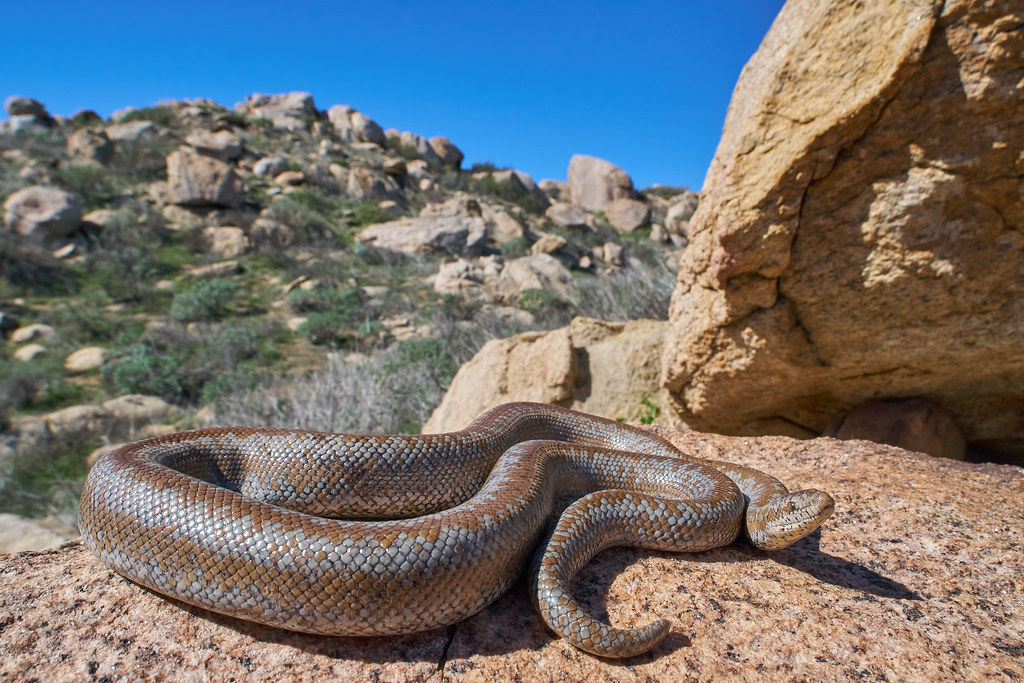
Several snake species around the world have independently evolved the ability to hunt from tree trunks, though some have perfected this art more than others. The emerald tree boa (Corallus caninus) and the green tree python (Morelia viridis) represent perhaps the most specialized tree trunk hunters, despite evolving on separate continents. Brown tree snakes (Boiga irregularis) and certain species of vine snakes also frequently employ this hunting strategy in tropical forests worldwide. These reptiles can remain motionless for hours or even days, their bodies coiled in distinctive positions that allow them to maintain balance while minimizing energy expenditure. What makes this hunting strategy particularly successful is the element of surprise combined with the gravitational advantage of striking downward at passing prey.
Perfect Physical Adaptations
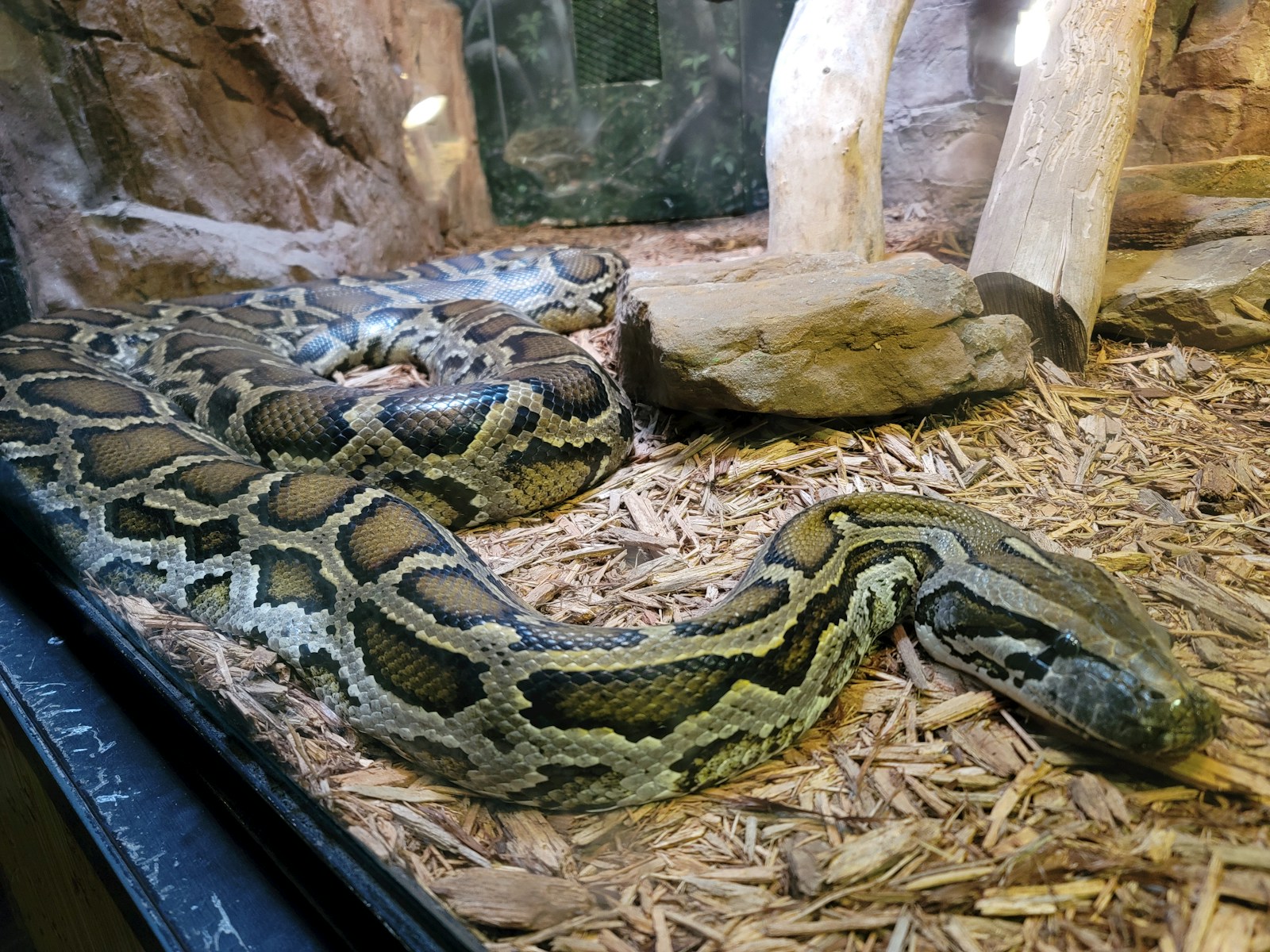
The snakes that hunt from tree trunks possess specialized physical attributes that enable this lifestyle. Their bodies typically feature prehensile tails that function essentially as a fifth limb, allowing them to anchor securely to branches while extending their bodies outward. Many tree-hunting species have developed laterally compressed bodies that create less of a shadow and make them harder to detect from below. Their scales often display remarkable patterns that break up their outline against tree bark, with some species like the Gaboon viper having such effective camouflage that they virtually disappear against the forest floor and tree bases. Additionally, these snakes generally possess excellent vision compared to ground-dwelling counterparts, with forward-facing eyes that provide better depth perception for striking accurately at moving targets.
The Iconic S-Shaped Striking Position
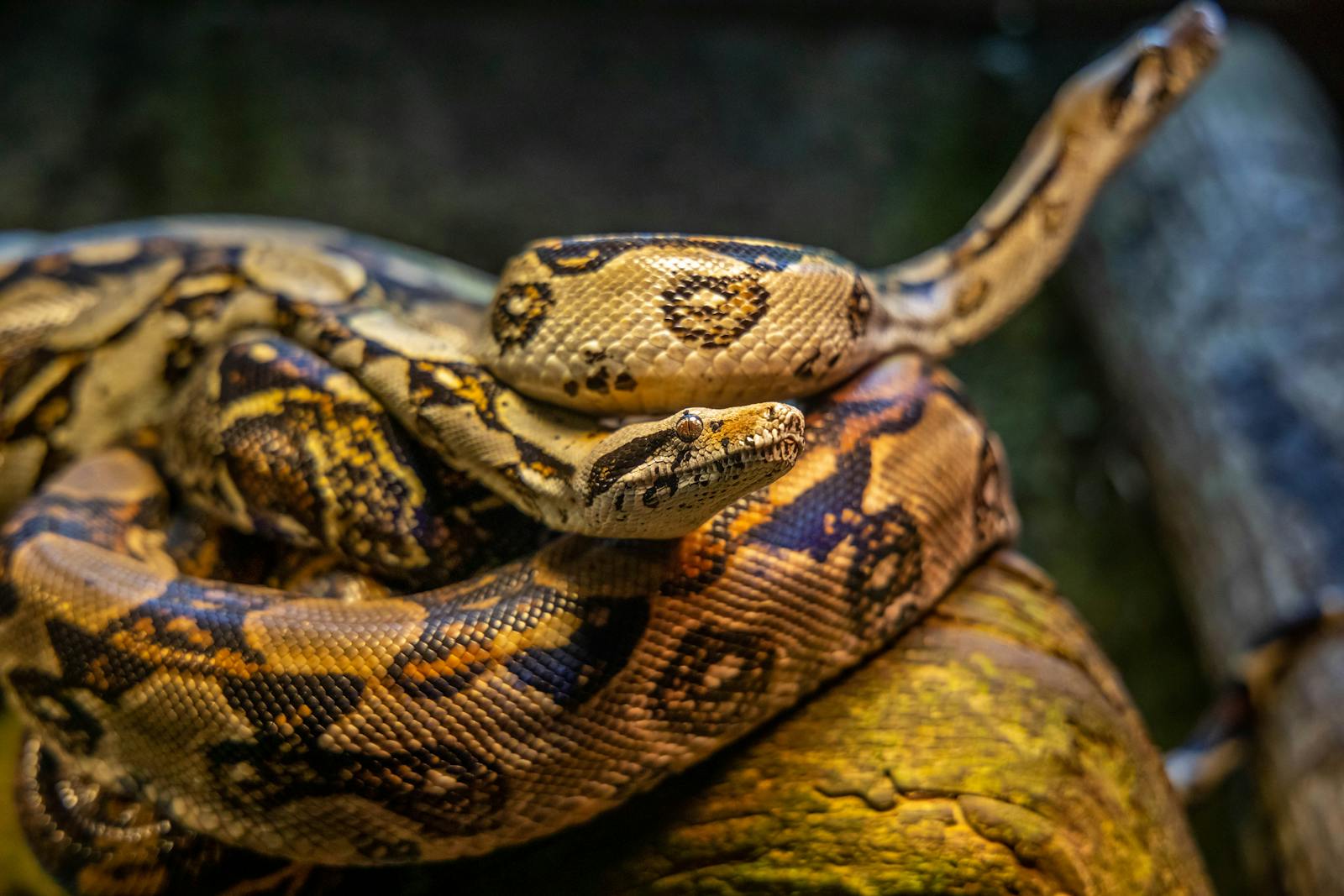
Perhaps the most recognizable feature of tree trunk hunters is their distinctive resting posture known as the “S-coil.” This position involves draping their bodies over branches or along tree trunks in loose, S-shaped loops with their head positioned prominently at the ready. This arrangement serves multiple crucial functions in the hunting process. First, it allows the snake to maintain its position without expending significant muscular energy, enabling hours of motionless waiting. Second, the coiled muscles act like compressed springs, storing potential energy that can be released in milliseconds when prey approaches. Third, this position enables the snake to strike from multiple angles, increasing its effective hunting range. Many species will maintain this posture through day and night, moving only when necessary to adjust their position for better hunting opportunities.
Heat-Sensing Abilities
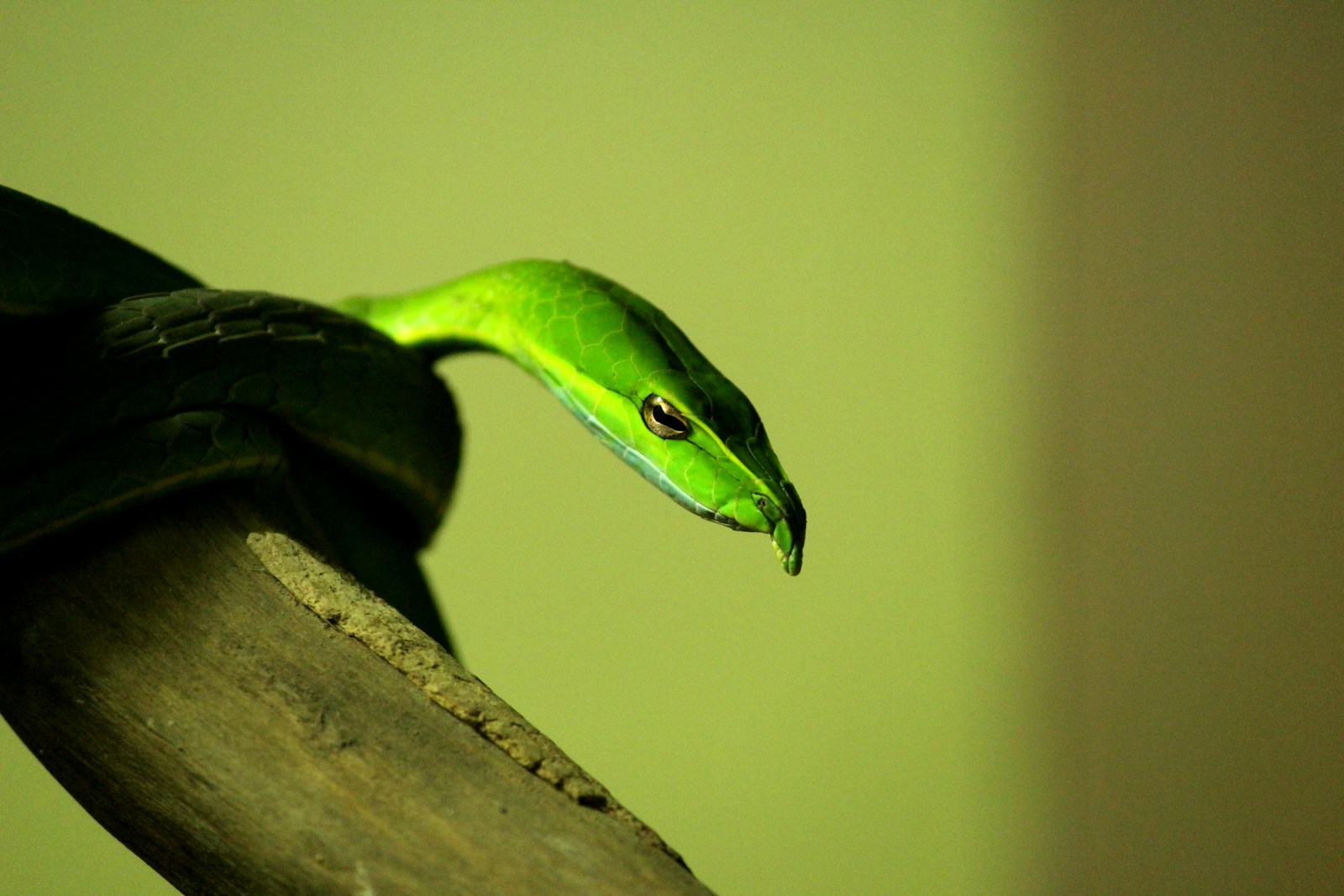
Many tree-hunting vipers and pythons possess specialized heat-sensing organs that dramatically enhance their predatory capabilities. Pit vipers have distinctive heat-detecting pits located between their eyes and nostrils that can detect temperature differences as small as 0.003 degrees Celsius. These extraordinary organs effectively allow the snake to “see” warm-blooded prey even in complete darkness or when the animal is visually camouflaged. Pythons possess similar heat-sensing labial pits along their lips that work in tandem with their visual system. When resting on a tree trunk, these snakes constantly scan their surroundings with these thermal sensors, creating a three-dimensional heat map of their environment. This remarkable adaptation means potential prey cannot hide simply by remaining still or blending in visually – their body heat betrays their presence to the waiting predator.
The Patience Game: Remarkable Hunting Endurance

The hunting strategy of tree trunk ambush requires extraordinary patience, a virtue these snakes possess in abundance. Some species have been documented remaining in the same position for over a week, waiting for suitable prey to pass within striking range. This patience is made possible by the snake’s extremely slow metabolism, which allows them to burn energy at a glacial pace compared to mammals. Their cold-blooded physiology means they don’t need to constantly feed to maintain body temperature, allowing them to wait extended periods between successful hunts. This energy conservation strategy is particularly important for larger species like pythons, which may only need to make a successful kill once every few weeks or even months to sustain themselves. When a suitable target finally does appear, the transition from stillness to explosive action occurs in a fraction of a second.
Preferred Prey Selection
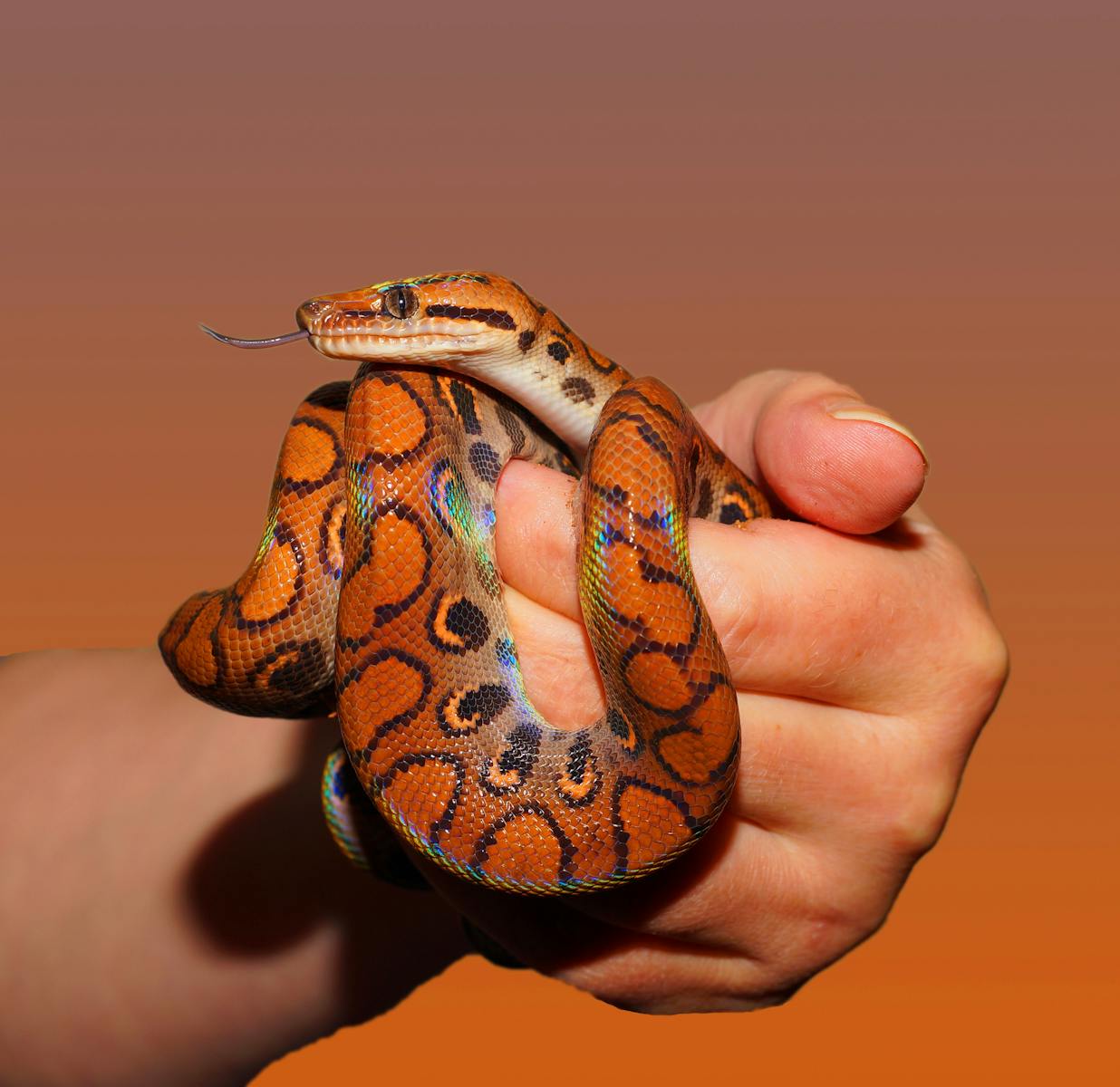
Tree trunk hunting snakes typically target specific prey animals that regularly move through their hunting territories. Birds represent a common prey item, as they frequently land on branches near where these snakes position themselves. Small mammals like rodents, which travel along tree branches or on the forest floor beneath the snake’s position, constitute another primary food source. For larger species such as pythons, prey can include monkeys, flying foxes, and even small deer that pass beneath their elevated hunting perches. Some specialized hunters like the brown tree snake focus almost exclusively on birds and their eggs, having devastated native bird populations in places where they’ve been introduced as invasive species. The strike is precisely calibrated to the size of the prey, with the snake using just enough force to capture the animal without losing balance and falling from its perch.
The Lightning-Fast Strike
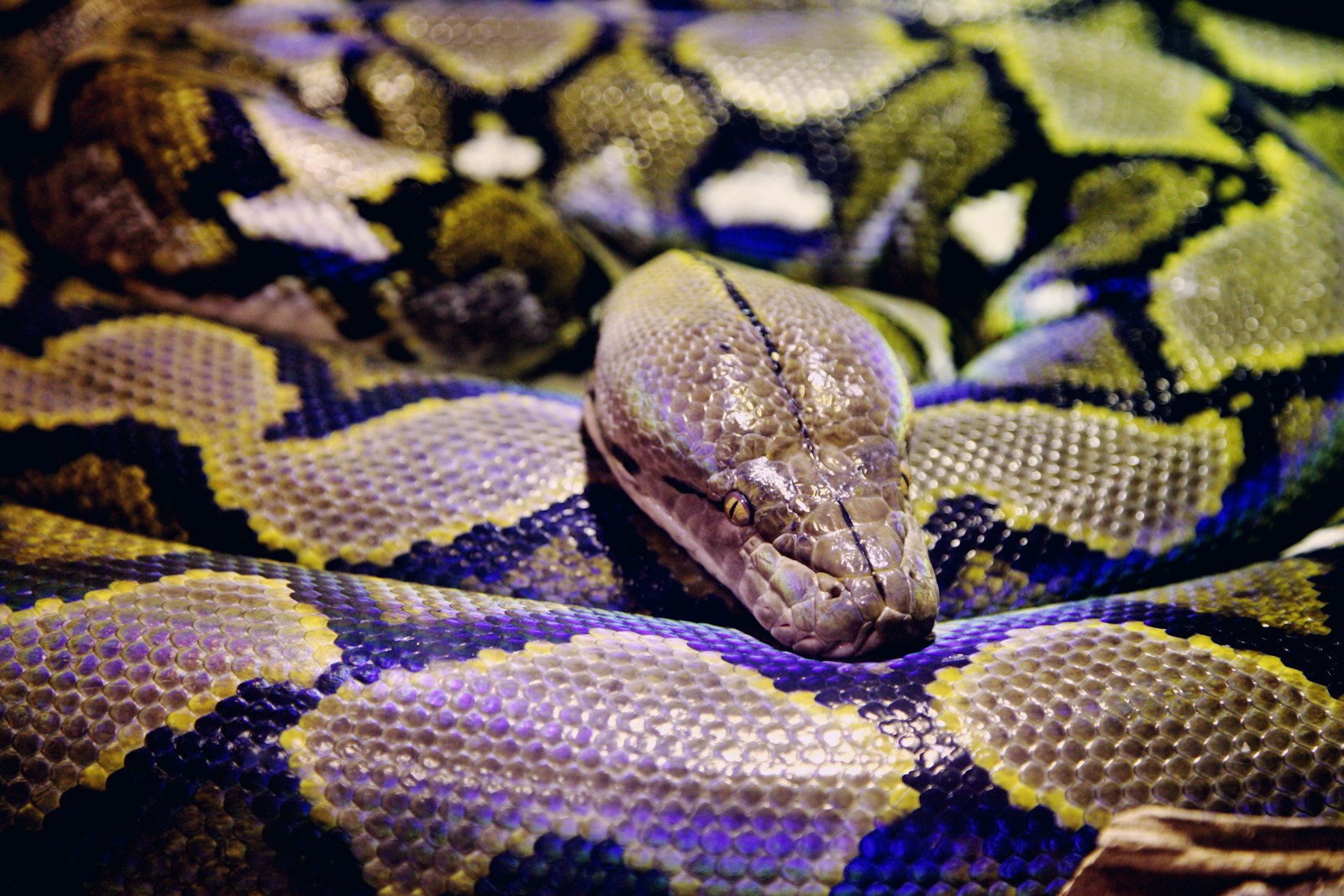
After patiently waiting for the perfect moment, these serpentine hunters unleash one of nature’s most rapid attacks. A striking snake can accelerate from complete rest to full extension in as little as 50-90 milliseconds – faster than a human can blink. The strike itself is a biomechanical marvel, with the snake converting stored elastic energy in its muscles into explosive forward momentum. High-speed photography has revealed that during this strike, the snake’s head can accelerate at up to 28 G-forces, making it one of the fastest movements in the animal kingdom. The precision is equally impressive, with studies showing some species can hit targets with accuracy of within a few millimeters, even when striking at moving prey. This combination of speed and accuracy makes evasion nearly impossible once the snake has committed to its attack.
Venom vs. Constriction Techniques
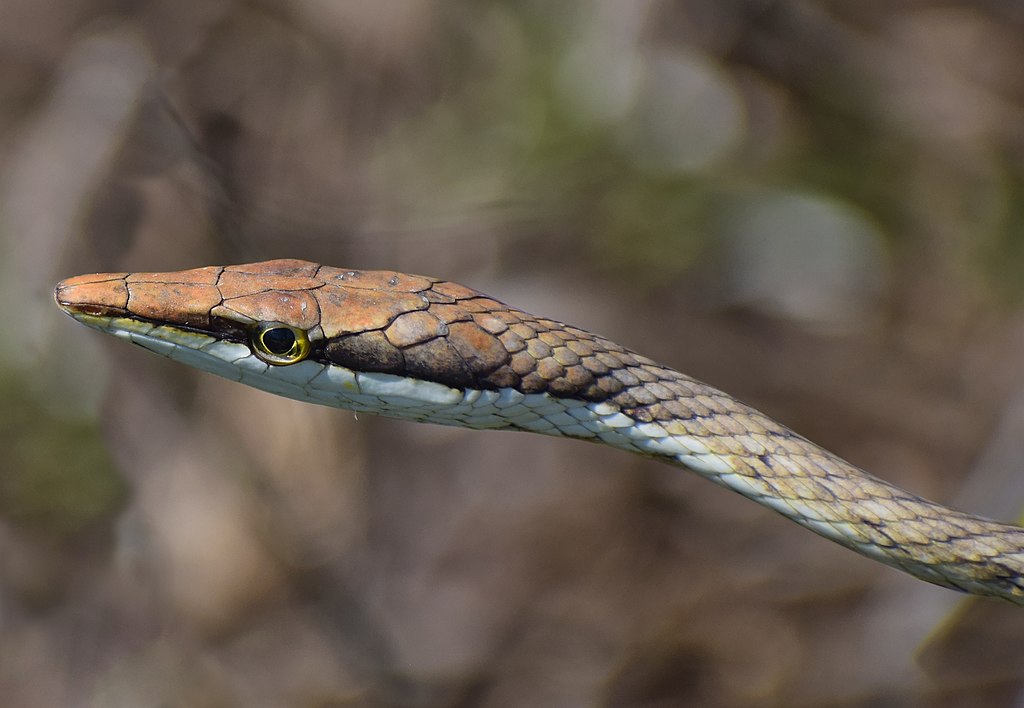
Tree trunk hunting snakes employ two primary killing methods depending on their species: venom injection or constriction. Venomous species like the arboreal vipers typically strike rapidly, injecting toxins through their fangs, then immediately release the prey to avoid potential injury from struggling animals or attracting larger predators to their position. They then track the envenomated prey using scent trails as it succumbs to the toxins. Constrictors like pythons and boas, conversely, maintain their grip after striking, rapidly wrapping coils around the prey and applying pressure that prevents the victim’s lungs from expanding and restricts blood flow to vital organs. The specific hunting technique influences how the snake positions itself on the tree trunk, with constrictors requiring more robust anchor points to support the weight of struggling prey during the subduing process.
Environmental Selection for Hunting Perches
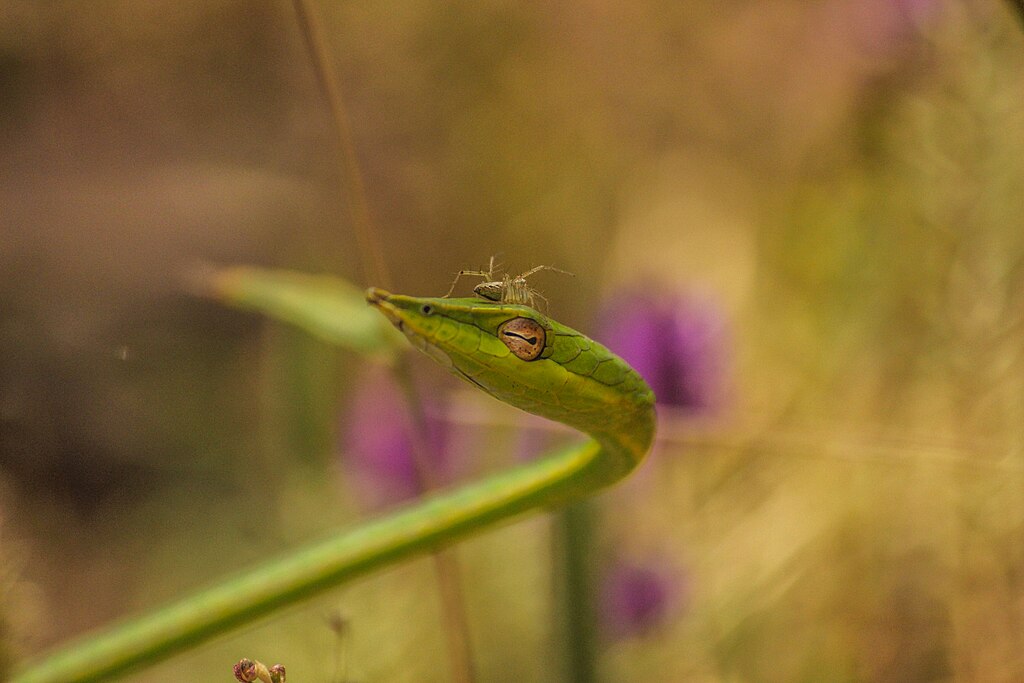
These specialized predators demonstrate remarkable selectivity when choosing their hunting positions on tree trunks. They typically select locations that provide both effective camouflage and strategic advantages for observing prey movements. Many prefer trees located near game trails, water sources, or fruiting trees that naturally attract potential prey animals. The height at which they position themselves varies by species and hunting strategy, with some preferring positions just a few feet off the ground to target terrestrial mammals, while others may hunt twenty feet or higher to intercept birds and arboreal mammals. Research has shown that many individuals return repeatedly to the same successful hunting perches, suggesting they maintain mental maps of productive locations within their territories. Some species even appear to rotate between several preferred hunting spots on a regular schedule, preventing prey animals from learning to avoid particular trees.
Daytime vs. Nighttime Hunting Strategies
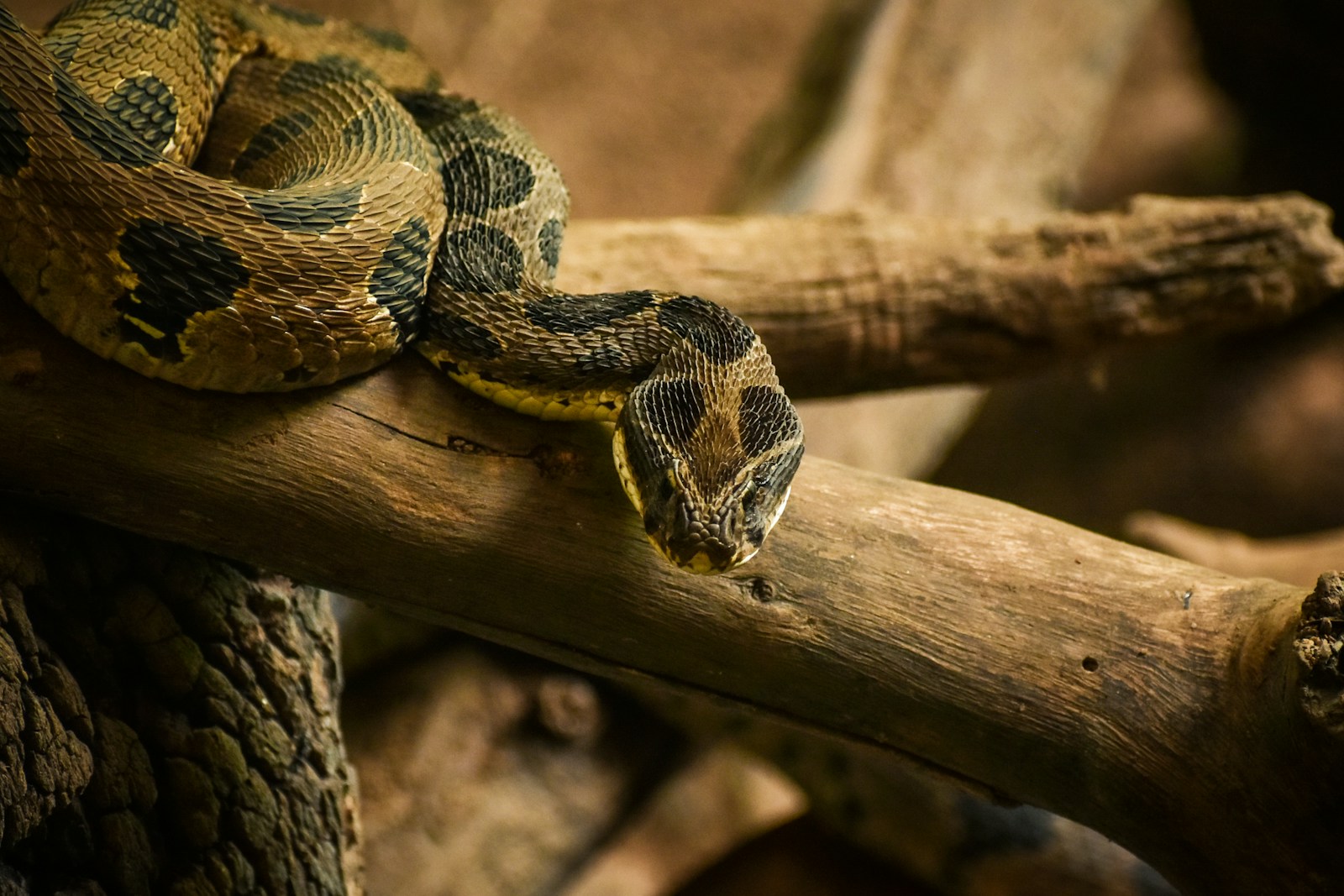
The timing of hunting activities varies significantly among tree trunk ambush specialists, with some being primarily diurnal (day-active) and others strictly nocturnal. This temporal specialization helps reduce competition between similar species occupying the same ecological niche. Diurnal hunters typically target birds and day-active mammals, positioning themselves to intercept animals during their peak activity periods. These species often possess more vibrant coloration that mimics dappled sunlight through leaves or bark patterns. Nocturnal specialists, conversely, emerge after sunset to target night-moving mammals, often employing heat-sensing organs that give them a significant advantage in darkness. Their coloration tends toward darker, less contrasting patterns that blend effectively in low light conditions. Some adaptive species can alter their hunting schedules seasonally or based on prey availability, demonstrating remarkable behavioral flexibility.
Defensive Adaptations While Vulnerable
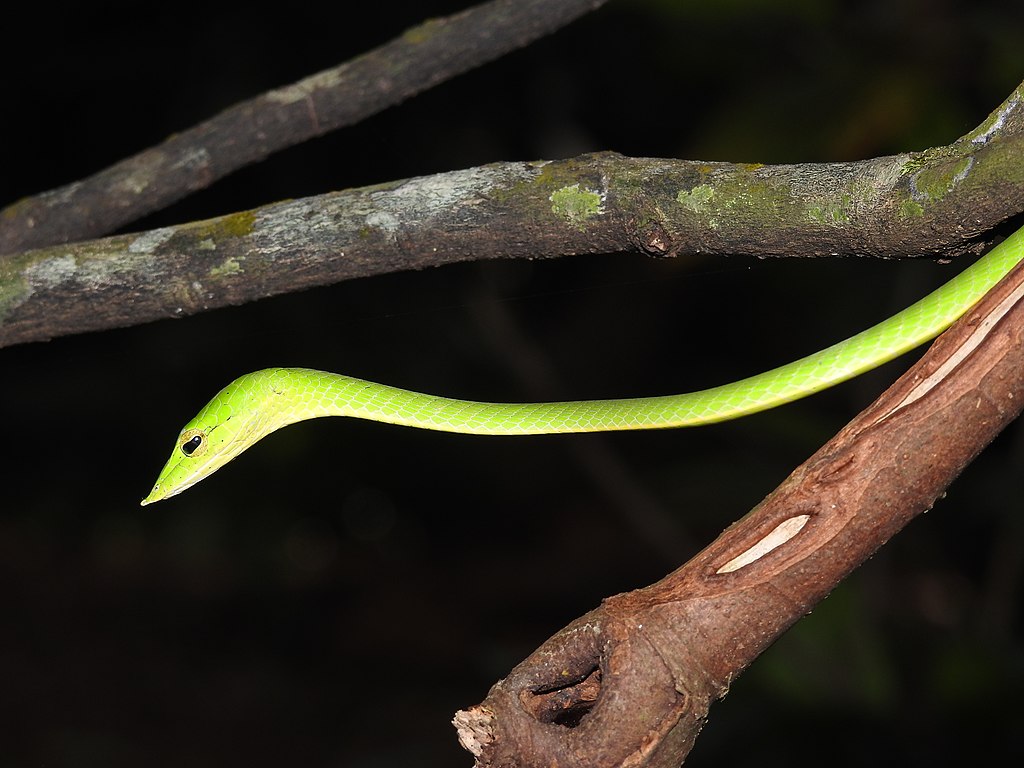
While positioned on tree trunks, these snakes find themselves in a potentially vulnerable state, exposed to their own predators while focused on hunting. To counter this vulnerability, they’ve evolved sophisticated defensive adaptations beyond just their camouflage. Many species possess cryptic head shapes that break up their outline when viewed from above by potential avian predators. When threatened, some can rapidly change positions to display warning coloration previously hidden on their undersides or between coils. Others may employ threat displays such as expanding neck hoods, vibrating their tails against leaves to create warning sounds, or even mimicking the raised head posture of venomous species despite being harmless themselves. These defensive adaptations allow them to maintain their exposed hunting positions for longer periods without becoming prey themselves, striking a delicate balance between hunting effectiveness and personal safety.
Conservation Challenges and Ecological Importance
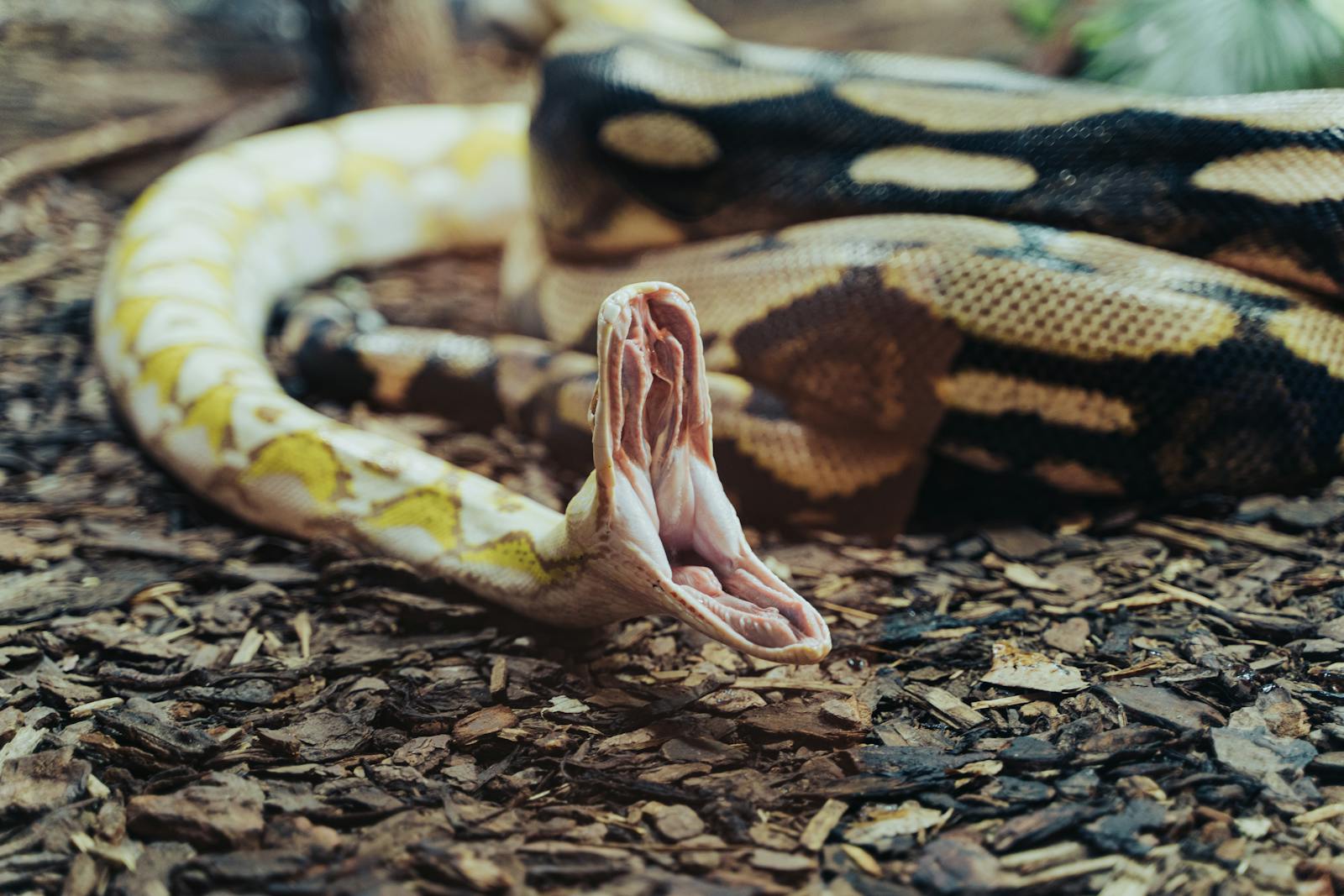
Many tree trunk hunting snake species face significant conservation challenges in the modern world. Habitat destruction through deforestation represents their greatest threat, as these specialized hunters require intact forest ecosystems with appropriate tree structures to practice their unique hunting strategy. The illegal wildlife trade targets many of these species, particularly the colorful pythons and boas, for the exotic pet market and skin trade. Climate change further threatens these snakes by altering the timing of prey animal behaviors and potentially disrupting the delicate ecological balance upon which they depend. Despite these challenges, these remarkable predators play vital roles in their ecosystems as controllers of rodent and bird populations, preventing potential population explosions that could damage forest plant communities. Their protection requires not just species-specific conservation efforts but preservation of entire forest ecosystems.
The tree trunk hunting strategy represents one of nature’s most refined predatory specializations, showcasing the remarkable evolutionary adaptations snakes have developed to exploit specific ecological niches. Through a combination of physical adaptations, behavioral specialization, and extraordinary patience, these serpents have mastered the art of the ambush. Their continued survival depends on our understanding and protection of both these fascinating creatures and the forest ecosystems they inhabit. As we gain further insights into their biology and behavior, these remarkable predators continue to demonstrate that sometimes, the most effective hunting strategy is simply to find the perfect spot, settle in, and wait for dinner to arrive.

